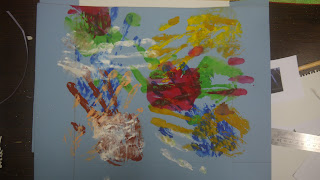As an amateur dancer, dancing is the first
form I can think about to demonstrate a scientific theory. This time, I am
imagining using a modern dance to show cell’s world, mainly the cell cycle.
Generally speaking, I’d like to involve multi-media, contemporary dance (stage
performance) and scientific theory.

The most important theory which will be used
to fit to the dance is the cell cycle theory. Life passes on from one
generation to another, which is a repeatable and continuous process. As for the
cells, their lives begin with the split of their metrocytes and ends up with
the existence of the filial cells, or the death of the cells. And this theory
can be a good theme for the dance show.

The famous German scholar R. Virchow once said,‘all cells come from cells’. The cell division for monads means the
individual units’ propagation, while the division for the metazoans leads to
the growth of the creatures. In order to show the division, the dance can start
with solo, a couple in the next, and ends up in a group dance.



Besides
the dancing forms, the dancing motions should also be closely related to the
cell
cycle
theory.

As
the main part in the cell cycle, cell division plays an important role and
involves specific details. Firstly, the chromosomes are copied and divided to
both ends of the cells. And then comes the division. Through my imagination,
all these steps can be shown by very exaggerated motions. I got the inspiration
from the famous dancer, Pina. The dance directed by her was full of power and
think-provoking.

However,
dance can only simply show the movement of the cells. To be more picturesque
and dramatic, it would be better if some multi-media can be involved.

Let’s think of the
structure of the cells. They contain extracellular, cytotrophoblast, nucleus
and some other things, which are very difficult to demonstrate only by a dance.
By using modern lighting technology, not only the stage effect can be improved,
the demonstration is also much clearer. As I still remember the calligraphy
scene in the 2008 Beijing Olympics is very impressive.












